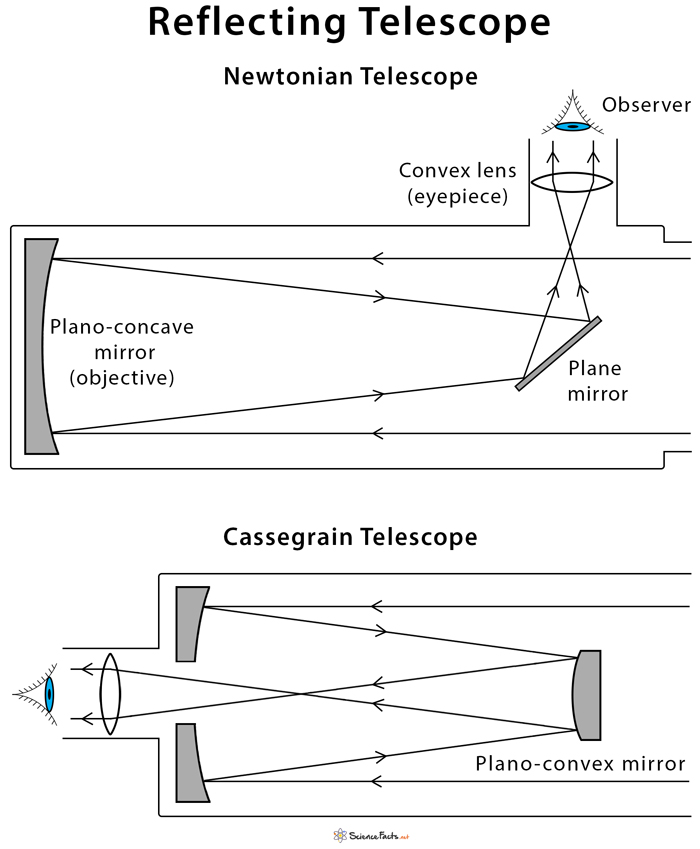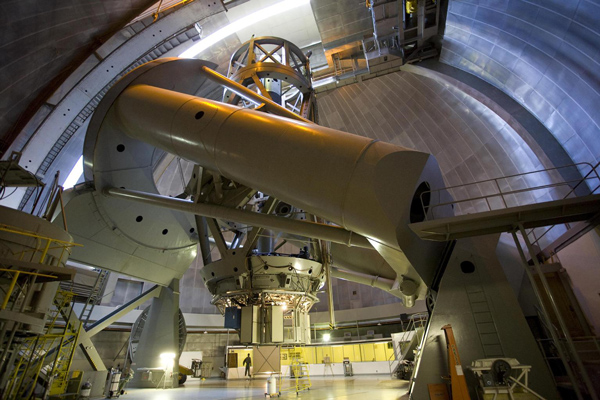The history of the reflecting telescope goes back to 1668 when the famous British physicist and mathematician Sir Isaac Newton invented it as a replacement for refracting telescope. It was later named as the Newtonian telescope, which was constructed from a concave primary mirror and a flat diagonal secondary mirror.
Hale Telescope at Palomar ObservatoryKeck 1 and Keck 2 at W.M. Keck ObservatoryLarge Binocular Telescope at Mount Graham International ObservatoryGran Telescopio Canarias at Roque de Los Muchachos ObservatoryGiant Magellan Telescope at Las Campanas ObservatoryHubble Space Telescope
Image Courtesy: Jpl.nasa.gov Magnification of a reflecting telescope mainly depends on the distance of the eyepiece lens from the focal point, i.e., the focal length of the eyepiece. Typically, a long objective focal length combined with a short focal length of the eyepiece lens will yield higher magnification. However, magnification is not the critical optical property for viewing astronomical bodies. The aperture size is crucial because it accounts for the amount of light the telescope receives. In other words, the more the light, the brighter the image. The size of the aperture also accounts for the resolution of the telescope. Larger aperture size will yield a high quality of image, crisper with increased clarity of the image.

